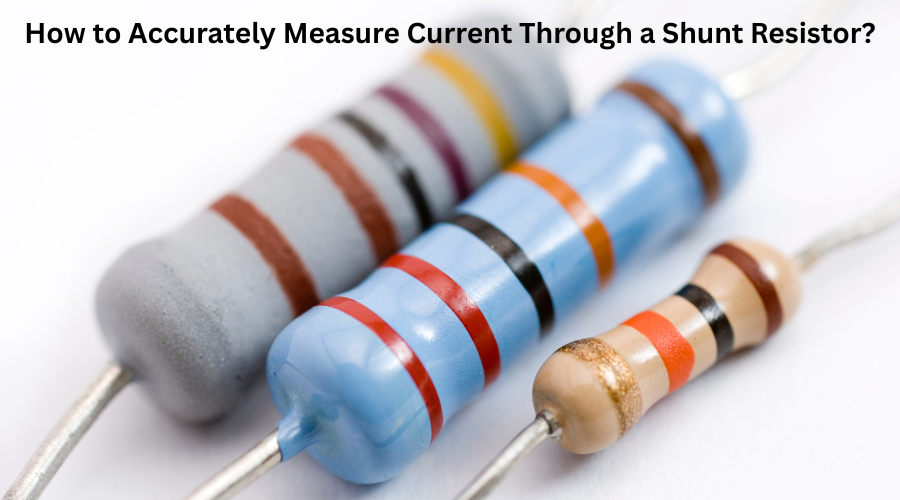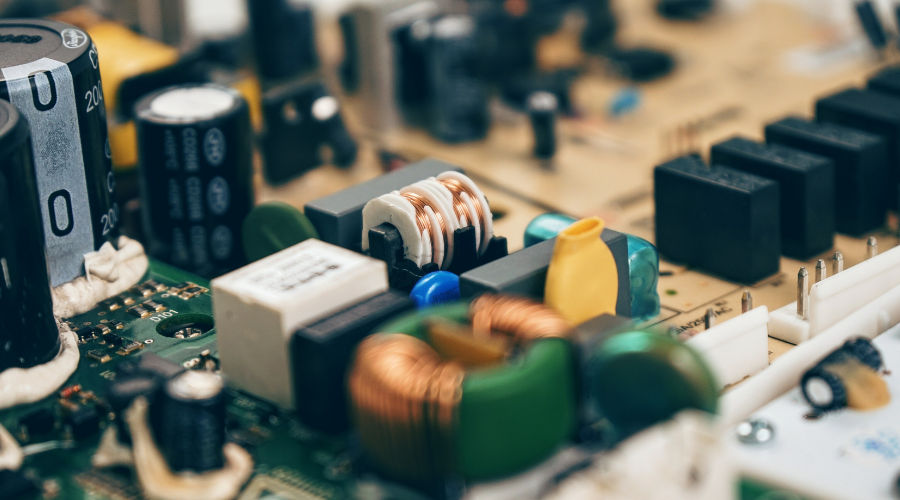
Shunt resistors are an essential component in electronic circuits, as they are used to monitor currents by tracking the amount of voltage drops. Shunt resistors are very useful in situations that require precise current measurement during operation, for example, automotive systems, renewable power generation, and industrial machinery. To obtain a comprehensive understanding of the shunt resistor terminology will be beneficial for both engineering and technical professionals alike. The demand for shunt resistors remains strong now and in the future. The Shunt resistor market was USD 3.1 billion in 2023 and could reach USD 5.2 billion by 2032, indicating that the increase will be a CAGR of 5.8%. In this blog we will look at how hunt resistors measure the current and how they are playing such a crucial role in key industrial applications.
Shunt resistors create a voltage drop across a "known value" resistor when some current passes through it. This voltage drop is then read with a voltmeter, with that value typically being amplified, and then used in the calculation of the current going through the circuit.
The current measurement in a circuit is brought about by calibrating a voltage drop across the shunt resistor for a known current, adjusting the output voltage by removing resistive material until the values completely coincide, and so on. Increasing currents then demand less resistive properties in order to detect smaller measurement values.
The shunt resistor output voltage usually ranges from 0 - 100 mV. This is normally too low for most processors to detect, so it is amplified and converted into a digital signal. If you choose a high-resolution ADC, you can afford to oversize your shunt bead and still be able to measure low currents with high accuracy.
Take the example of your home circuit. There are lots of high-cost electrical gadgets whose damage may cost in repairing or replacement. High voltage surges can damage parts of a circuit. So, a shunt resistor circuits can become a safety element which may be used in guarding the circuit from voltage surges. This is actually done with the aid of crowbar circuits which consist of a shunt resistance. High voltage applies to the device by short-circuiting; this immediately leads to a voltage drop. The shunt resistance is the main part triggering the short circuit as it consumes high current.
An entire circuit comprising various circuits or loops can be simply broken from one element being faulty in a circuit and this can render the entire circuit non-functional so that all devices that are connected to that circuit also go off completely. Well, this problem can be solved by using a shunt resistor. With a shunt, any excessive voltage would make it short circuit, and the electricity would bypass the faulty equipment so that the break would not occur in the current loop.

High frequency noises are present in many electronic circuits. They usually have a negative effect on performance, often leading to the interference of the signal. A shunt resistor redirects the noise signals to the ground thereby preventing them from travelling through to the circuit components.
Rated maximum current marks the current limit above which the shunt resistor may not maintain its specified accuracy. The drop in voltage at the maximum current rating indicates the resistor's resistance value. As a case in point, a shunt resistor rated at 100 A and 50 mV would have a resistance value of 50/100 = 0.5 mΩ.
It can be defined as the maximum energy that can be dissipated by a resistor, according to Joule's Law. The larger shunt resistors have sufficient power rating, considering that they have a large surface area. The shunt resistor will go bad if power dissipation exceeds the power rating of the shunt resistor.
This is one of the critical aspects of resistor performance. It describes how resistance changes concerning ambient temperature. The TCR values are critically important for selecting the correct shunt resistor.
If we delve deeper into the research findings, we will see a surge in demand for shunt resistors in terms of renewable energy. Solar inverters typically use shunt resistors in order to carry current flows safely. And the research findings display a massive consumption rate in the installation process. In this case, take shunt resistors that are used in battery management systems - to achieve the accurate measurement of a current in solar inverters.
Evolution of transport sector has created a rapid demand for EV's in the last few years. The majority of countries that utilize EV's are Europe and North America, which creates an increasing size of shunt resistor demand in their battery management systems but in this case there is a lot of miniaturization of components. All components must carry safe current flows in battery management systems.
The electronic industry, which include all areas of electronics itself, has a steady demand for shunt resistors, and that is also growing. the growth has already been seen by the people from all of the innovation of smartphone technology, laptop technology, and wearables. The research showed show the consumption rate of shunt resistors in their power supply and power meter, can be a massive consumption rate. If we look at the results, it also shows that industrial automation equipment also is a rise in size of demand for shunt resistors. Battery modules and radiofrequency transceiver modules are also on an increase in size of demand for shunt resistors.
Shunt resistors are some of the key components for future developments. Solar developments and electric vehicles are both being rapidly adopted in the consumer marketplace. Since both technologies need to allow a safe current flow while protecting against short circuits and fluctuations, shunt resistors are placed inside their battery management systems. Parallel growth can also be observed in other equally relevant industries utilizing shunt resistors as part of their products and infrastructure.
The basic aspect of a shunt is having a resistive element with a known value, and having a voltage drop across that resistive element, therefore providing a perspective for how much current passes through the circuit, how much power is being consumed, or indicating a short. This ensures an accurate shunt, so that one can have a specific outlook on the current condition of the electrical circuit.
Q1: What is a shunt resistor and how does it help measure current?
A: A shunt resistor is a low-resistance component placed in series with a circuit. As current flows through it, a small voltage drop is created across the resistor, which can be measured to calculate the current using Ohm’s Law (I = V/R).
Q2: What tools are needed to measure current through a shunt resistor?
A: The electrical potential drop across the shunt resistor needs a precision voltmeter or balanced amplifier to measure. Digital multimeters or current-sense amplifier should be used to increase accuracy.
Q3: How can I ensure accurate current measurement with a shunt resistor?
A: Use a high-precision, low-temperature-coefficient shunt resistor, ensure secure connections to minimize contact resistance, and measure as close to the resistor terminals as possible to reduce error from parasitic resistance.